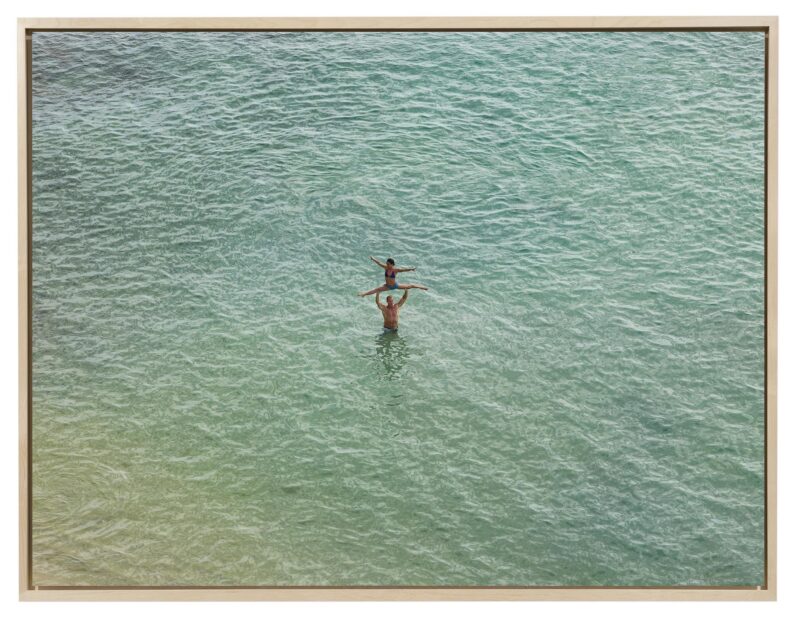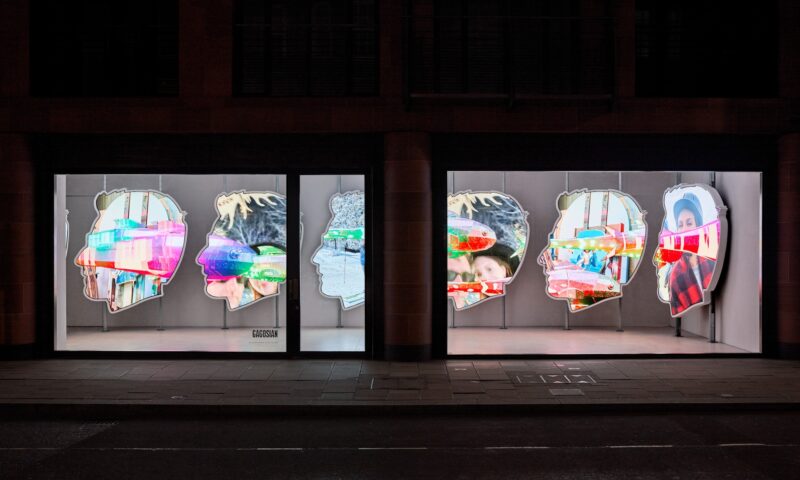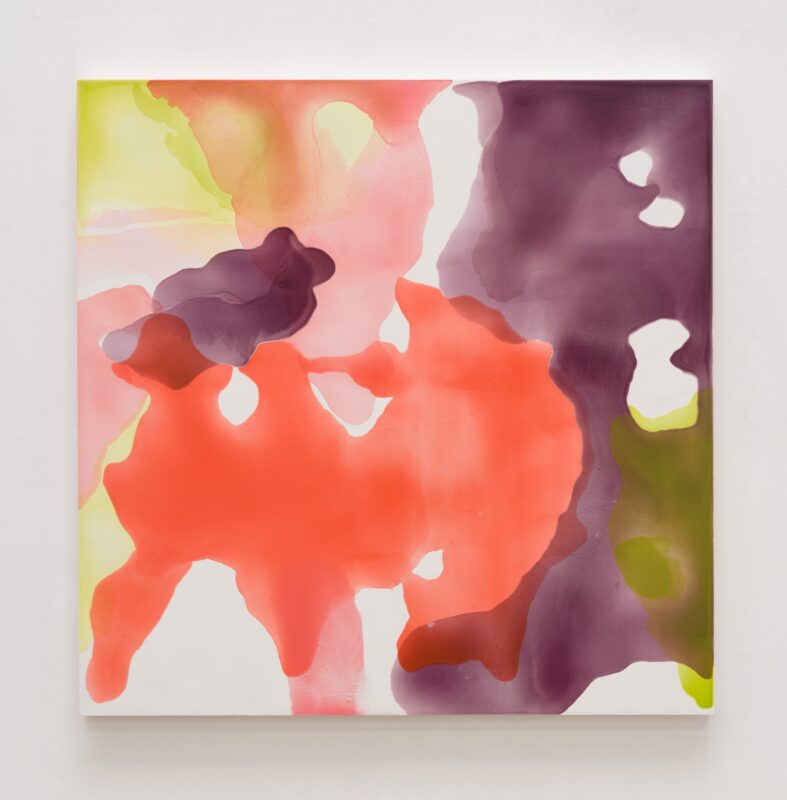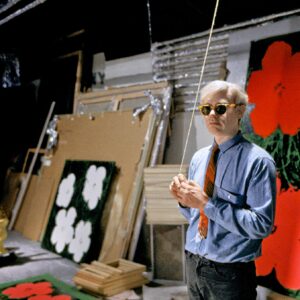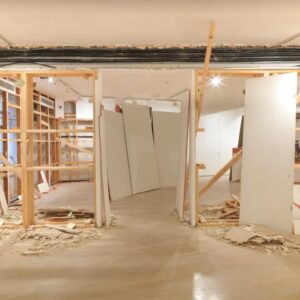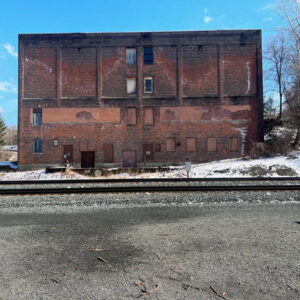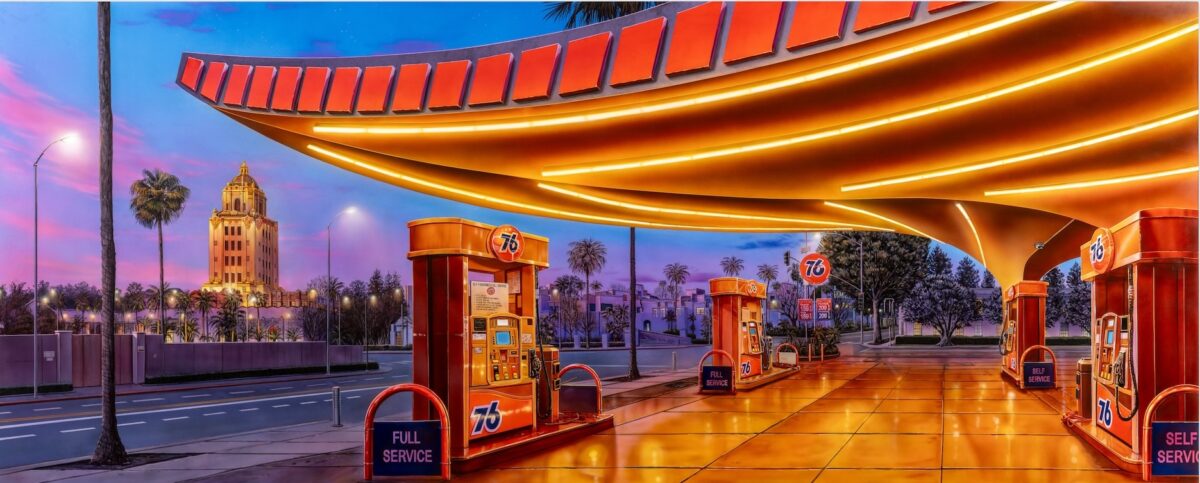
Photo: Josh White Courtesy Gagosian
Noir, an exhibition of new paintings by Alex Israel will open at Gagosian Beverly Hills this week on Thursday January 9th.
An LA artist who doesn’t reckon with noir is a flickering bulb that lures no moths, and maybe no bulb at all. So I was glad to hear that Alex Israel, who was born and grew up here, who lives and works and belongs here, was doing the native reckoning where else but Warner Bros., or what’s left of it, where John Huston and Humphrey Bogart (and Peter Lorre and Sydney Greenstreet) made The Maltese Falcon for six summer weeks of 1941. If anyone called it the first noir, I wouldn’t fight them.
Some say noir is a genre, to which I would argue, there are noir musicals; others have said, with better evidence, that noir is a style, but it takes more than shadowed light through venetian blinds to do the dirty deed. I’ve heard it said that noir is a mood: doom, but Titanic (1997) is no Criss Cross (1949).
Like the filmmakers before him, Israel is defining the noir tendency in his own way, through images. These are painted streetscapes. They began, though, as photos and sketches, visual ideas that Israel enhanced with reference material—the purplish-blue gradients he wanted for the night sky, for instance, or specific Mexican fan palm silhouettes to dot their horizons—in order to create blueprints for what would become at first digital renderings, and then ultimately finished paintings. Beginning in 2021, these blueprints went back and forth between Israel and a pair of animators. Years of additions and subtractions produced renderings that were then painted in acrylic on canvas by an artist in the Scenic Art department at Warner Bros.
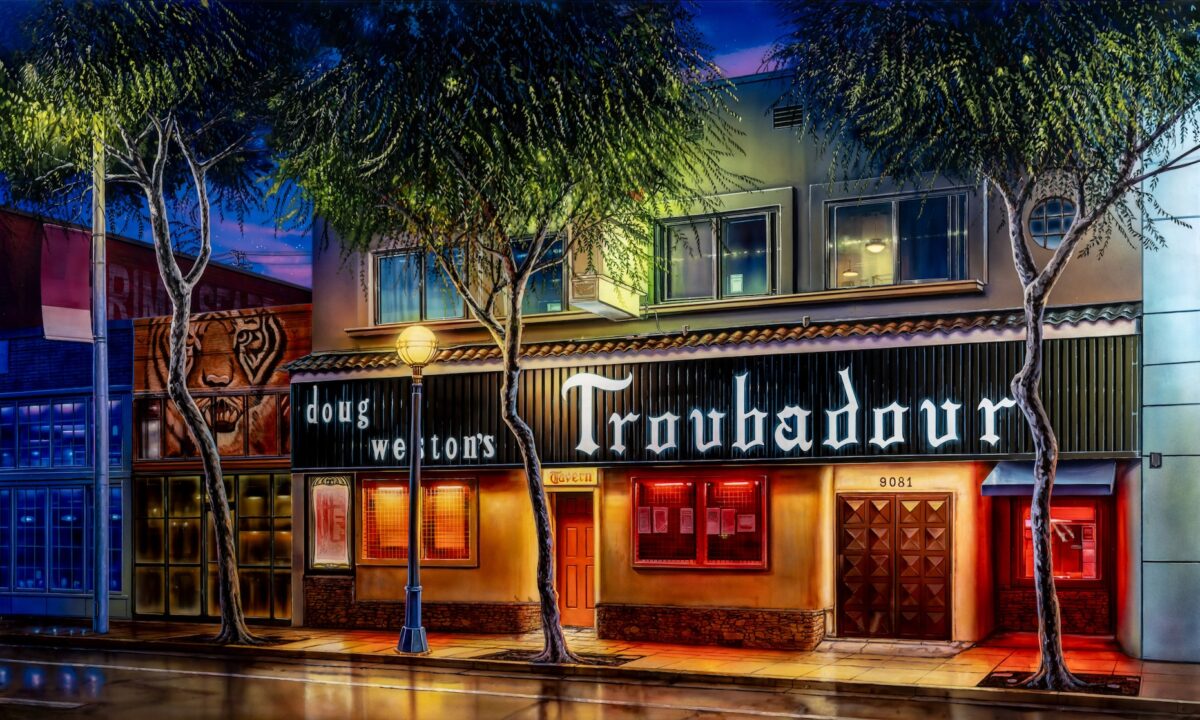
Photo: Josh White Courtesy Gagosian– Alex Israel’s “Noir” to Debut at Gagosian Beverly Hills this week
Upon first seeing the works in a warehouse-like space on the edge of the Burbank backlot, I was home. The Troubadour, the Cadillac dealership in the Valley, the Bruin Theater in Westwood . . . The combination of their CinemaScope proportions and my memory—our memory, if you’re one of ours—put me there in the virtual reality of a beloved present/past. Or is it “past/present”? The locations Israel picked for his pictures are undeniably of their time—the 1940s car dealership, the ’50s diner, the ’60s gas station, the ’70s lingerie shop, the ’80s yogurt spot—but still a part of the present. When you add to that your own memories, the temporal effect on the brain is kaleidoscopic. Not where am I, but when am I?
There are no people, only mannequins, in a lingerie shop window, no cars except behind glass in a Van Nuys showroom all done up for Christmas. I wouldn’t say it’s a nightmare, but it’s certainly some kind of a dream, like one of those video games where the player— whose “crime” is unknown, and whose mystery is their past—wakes up somewhere strange and has to figure out how they got there. And this feeling is essential to the thing we call “noir,” the haunting that crept into Hollywood with World War II, its visual and psychological disorientations of time and space, the cinematic analogues to a modern world suddenly unmoored.
If Israel’s pictures are seductive, they should be. Femmes wouldn’t be fatales if they weren’t. The paintings’ rich, pulpy candy colors and nostalgic lure, their slick, sensual surfaces that say come hither . . . these are not the girls next door. Something of this duplicity, the uncanny appeal of each building’s façade, is conscientiously layered into Israel’s process. The photographs and references of Israel’s blueprints are not retouched but redrawn, and in this redrawing they are heightened by local myth and redescribed through the lens of Israel’s memory in dramatic, theatrical lighting and exaggerated, impossible perspective. These places only seem natural. They are to be loved, but not trusted.
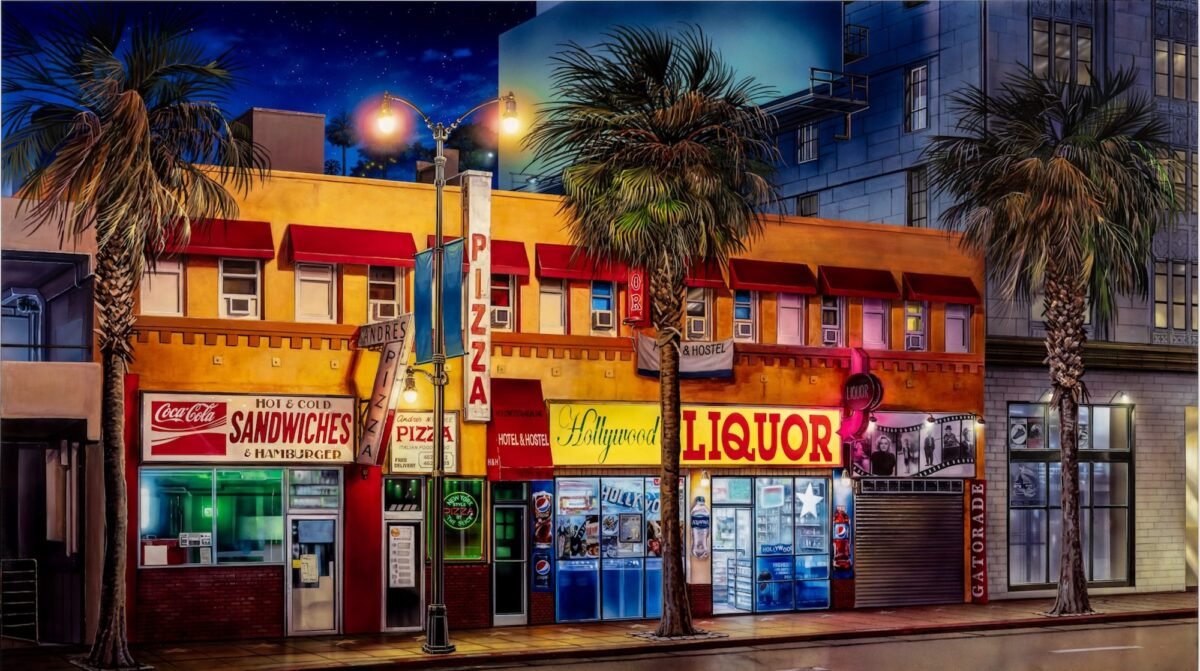
Photo: Josh White Courtesy Gagosian
And those who love Los Angeles share Israel’s view that our city can be beautified by illusions. We know that “Hollywood Liquor”—to borrow from a cheery, brightly lit sign on Israel’s Hollywood Boulevard—is better than no liquor at all, and that those who don’t dream don’t know they’re already dead. Look at Israel’s skies: it’s night, yes, but what a night.
Text by Sam Wasson, from an essay to be published in the Spring 2025 issue of Gagosian Quarterly
Alex Israel Noir, Open from January 9th, 2025, Gagosian Beverly Hills
Opening reception: Thursday, January 9th, 6–8pm
About the artist
Alex Israel was born in 1982 in Los Angeles, where he currently lives and works. Collections include the Los Angeles County Museum of Art; Museum of Contemporary Art, Los Angeles; The Broad, Los Angeles; Museum of Modern Art, New York; Solomon R. Guggenheim Museum, New York; Whitney Museum of American Art, New York; Hirshhorn Museum and Sculpture Garden, Washington, DC; Centre Pompidou, Paris; Moderna Museet, Stockholm; and Museum Boijmans Van Beuningen, Rotterdam, Netherlands. Solo exhibitions include Le Consortium, Dijon, France (2013); Sightings, Nasher Sculpture Center, Dallas (2015–16); Alex Israel at The Huntington, Huntington Library, Art Museum, and Botanical Gardens, San Marino, CA (2015); #AlexIsrael, Astrup Fearnley Museet, Oslo (2016); Using Walls, Floors, and Ceilings, Jewish Museum, New York (2016–17); Waves, Kunstraum Innsbruck, Austria (2018); Alex Israel × Snapchat, Bass Museum of Art, Miami Beach, FL (2021–22); and Freeway, Fosun Foundation, Shanghai (2021–22).

